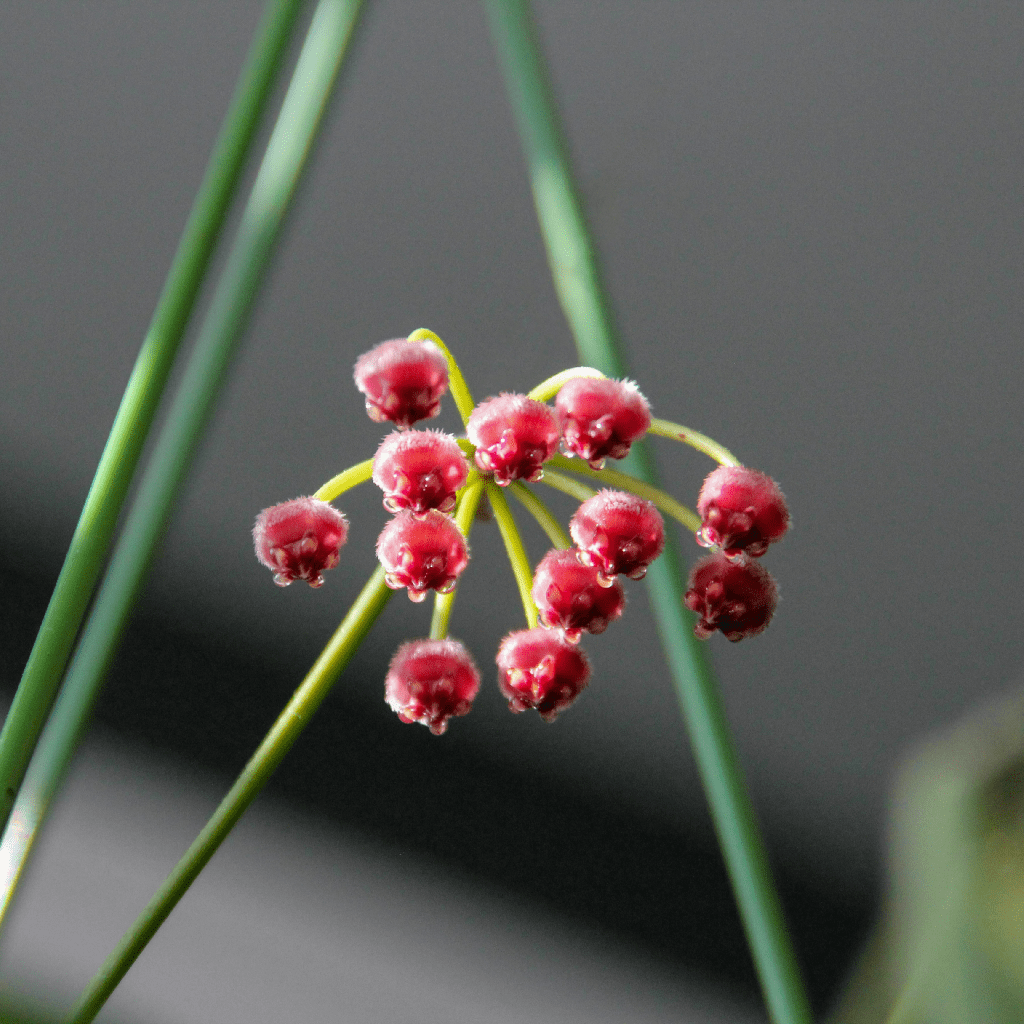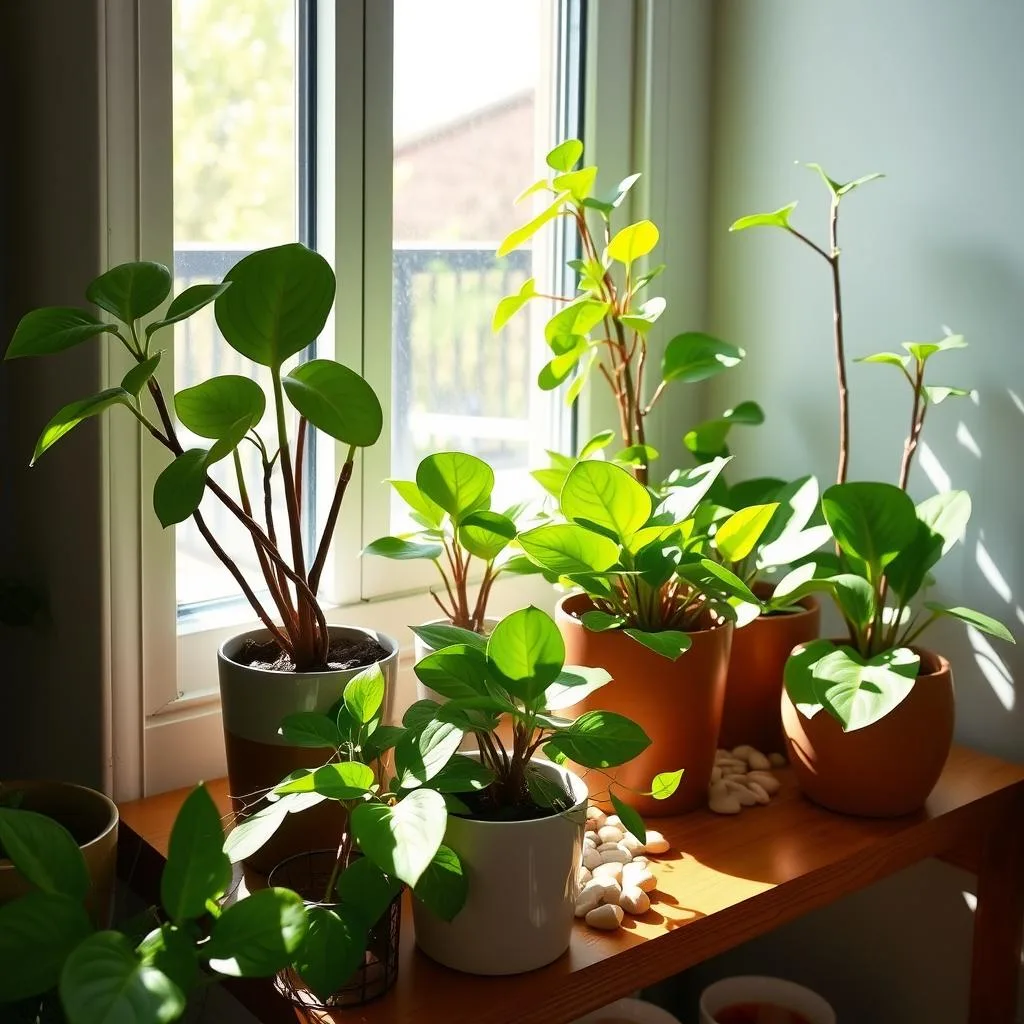Ever caught yourself staring at a Hoya plant, enchanted by its glossy leaves or those star-shaped flowers that smell like a tropical night? I sure have. My love affair with Hoyas started years ago when I nabbed a Hoya Carnosa at a flea market, its vines spilling over the pot like a green waterfall. I’ll admit, I almost drowned it in my early zeal turns out, less water is more with these guys! If you’re diving into Hoya plant care, you’re in for a treat. I’ve spent countless hours (and a few tears) figuring out what makes these plants tick, and I’m here to spill every secret I’ve learned.
This isn’t your average care guide. It’s a deep dive packed with practical steps, personal stories, and solutions to every Hoya hiccup you might face, whether you’re tending a heart-shaped Hoya Kerrii, a cascading Hoya Australis, or a quirky Hoya Imbricata. My goal? To arm you with everything you need to grow these tropical gems like a seasoned pro, blooms and all. Let’s get those vines thriving!
Quick Hoya Plant Care Snapshot
- Light: Bright, indirect filtered sun is their happy place.
- Water: Every 7-14 days when the top inch of soil dries out.
- Soil: Airy mix one-third peat moss, perlite, and orchid bark.
- Humidity: Craves 60%+; they’re jungle babies at heart.
- Temperature: Cozy 65-85°F (18-29°C); no chilly drafts allowed!
- Fertilizer: Light feeding in spring/summer half-strength 20-20-20.
What Are Hoya Plants?
Their Roots (Literally and Figuratively)
Hoya plants, nicknamed wax plants, come from the lush forests of Southeast Asia and Australia. With over 200 species in the genus, they’re epiphytes naturally clinging to trees or rocks, sipping moisture and nutrients from the air and rain. Those thick, waxy leaves? They’re built to store water, giving Hoyas a resilience that’s perfect for indoor life. My Hoya Pubicalyx, with its dark foliage and pink blooms, is a standout, but even the simplest Hoya Carnosa has a charm that’s hard to resist.
Why They’re a Plant Lover’s Dream
Hoyas blend low-maintenance vibes with stunning looks. They don’t demand constant attention, yet they reward you with cascading vines, unique leaf shapes, and when they’re really happy clusters of fragrant flowers in white, pink, or even deep red. I’ve found them forgiving of my occasional neglect, but they do have preferences. Nail those, and you’ll see why they’ve earned a cult following among plant enthusiasts.
A Fun Fact to Impress Your Friends
Did you know some Hoyas, like Hoya Imbricata, are called “ant plants” because ants nest under their leaves in the wild? It’s a quirky twist that makes them even more fascinating and a reminder of their wild, tropical roots.

Hoya Plant Care Basics: The Foundation
1. Lighting: Finding the Sweet Spot
Hoyas thrive in bright, indirect light imagine sunlight filtering through a jungle canopy. Too much direct sun fries their leaves (my Hoya Bella still hasn’t forgiven me for that sunny windowsill blunder), while too little leaves them leggy with no blooms in sight.
- Ideal Spot: 3-4 feet from a south-facing window with a sheer curtain, or east/west windows for softer rays.
- Hack: Low light? A cheap LED grow light turned my dim-corner Hoya Australis into a happy camper.
- Signs to Watch: Yellowing edges mean too much sun; stretched stems scream for more brightness.
- Personal Tip: Rotate your pot every few weeks for even growth I forgot once, and my Hoya leaned like it was reaching for the sun!
2. Watering: Less Is Often More
Watering’s where I messed up most as a beginner I thought more love meant more water, and my Hoya Kerrii paid the price with soggy roots. The trick? Let the top inch of soil dry out before watering, usually every 7-14 days, depending on light and humidity. Always let it drain fully no wet feet allowed.
- How to Test: Stick your finger in. Damp? Wait. Dry? Time to water.
- Seasonal Shift: In winter, they nap—water less, maybe every 3 weeks.
- Anecdote: I now water mine in the sink and let them drip-dry on the counter—keeps messes and root rot at bay.
3. Soil: Light, Loose, and Lovely
Hoyas hate dense, soggy soil it’s like forcing them to wear wet socks. Mix one-third peat moss (moisture), one-third perlite (drainage), and one-third orchid bark (airiness) for a blend they’ll adore. I’ve tweaked this recipe over years, and it’s my go-to.
- Avoid This: Regular potting soil it’s too heavy and traps water.
- Quick Fix: If you’re stuck, add extra perlite or sand to lighten it up—I’ve done it in a pinch and survived.
- Bonus: Some swear by soilless mixes like leca or coco coir. I tried leca with my Hoya Linearis, and it’s been a rot-free dream.
4. Humidity & Temperature: Tropical Dreams
Hoyas crave humidity above 60% dry air turns their leaf edges brown, a fate my Hoya Obovata suffered until I got wise. A humidifier’s my best friend, but a pebble tray or misting works too. Keep temps between 65-85°F (18-29°C); anything below 50°F, and they’ll sulk or drop leaves.
- Humidity Boosters: Group plants together, use a tray with water and pebbles, or mist daily if you’re dedicated (I’m not I forget!).
- Temp Tip: Avoid drafts my Hoya nearly croaked by a winter window once.
- Fun Fix: I’ve tucked mine in the bathroom during dry months shower steam’s a free humidity hack!
5. Fertilizing: Feed, Don’t Feast
Hoyas aren’t greedy. In spring and summer, I give them a half-strength 20-20-20 liquid fertilizer every 3-4 weeks. Winter? They’re off the menu let them rest. For blooms, a phosphorus-heavy mix can help, though my Hoya Obovata’s still playing coy.
- Watch Out: Overfeeding leaves crusty salt on the soil flush it with water every few months.
- Experiment: I’ve tried coffee grounds for a pH tweak it’s subtle, but my Hoya Carnosa seems to like it.
- Reality Check: Don’t expect miracles some Hoyas bloom on their own schedule.

Advanced Hoya Plant Care: Level Up Your Game
Propagation: Double the Hoya Love
Want more Hoyas or a gift for a friend? Stem cuttings are your ticket. Here’s my foolproof process:
- Snip a 4-6 inch stem with 2-3 nodes, cutting just below a leaf with clean shears.
- Strip the bottom leaves, leaving the top ones—dip in rooting hormone if you’re impatient like me.
- Place in water (change every few days) or a damp soil mix. Cover with a perforated plastic bag for humidity.
- Wait 2-4 weeks for roots water’s faster, soil’s sturdier. Pot up at an inch of root growth.
- Caution: That milky sap’s a skin irritant I got a rash once and never skip gloves now.
- Story: My first cutting rooted in a jam jar on the windowsill—it felt like magic!
Pruning & Training: Shape Your Vision
Pruning’s minimal trim dead leaves or tame wild growth in spring. I’ve trained my Hoya Carnosa on a trellis, winding its vines into a living spiral it’s my pride and joy. Hanging baskets let trailing varieties shine, like my Hoya Rope with its twisted leaves.
- Bloom Rule: Don’t cut old flower stalks they might sprout blooms again next time.
- Tip: Use soft ties to guide vines harsh wires can scar them, as I learned with a bent Hoya Australis stem.
Flowering: Chasing Those Elusive Stars
Hoya blooms waxy, fragrant clusters are the holy grail. Bright light’s non-negotiable; too dim, and they won’t bother. Stable conditions no sudden moves and a bloom-booster fertilizer can coax them out. My Hoya Pubicalyx took two years to flower, and when it did, I nearly threw a party.
- Pitfalls: Buds dropping? Overwatering or drafts are likely culprits—keep it steady.
- Patience: Some Hoyas bloom young, others make you wait. It’s a test of faith!
- Extra Push: A slight dry spell between waterings can trigger blooms—worked for my Hoya Bella once.
Repotting: When and How
Hoyas don’t love frequent moves repot every 2-3 years or when roots peek out or soil’s compacted. Spring’s best; use a pot 1-2 inches bigger with drainage holes. Gently tease out roots, trim any rot, and refresh with that airy mix.
- Sign Check: Roots circling the pot or slow-draining soil? Time to repot.
- Mistake: I upsized too much once soggy soil stalled my Hoya Kerrii for months.
Troubleshooting Hoya Plant Problems
Common Woes & Fixes
- Yellow Leaves: Overwatering or too much sun. Cut back water, shift to indirect light.
- Wrinkled Leaves: Thirsty or low humidity. Soak thoroughly and mist or tray it up.
- No Growth: Light or root-bound issue brighten it up or repot.
- Pests: Mealybugs (white fuzz) or aphids (tiny bugs)? Dab with alcohol or spray neem oil I’ve fought both and won with persistence.
- Story: My Hoya Linearis once turned yellow from a week of overzealous watering. A quick repot and lighter hand saved it phew!

Wrap-Up: Your Hoya Adventure Begins
Hoya plant care is a joyful mix of science and soul. With bright light, a careful watering hand, and a touch of tropical flair, your Hoya will reward you with lush vines and maybe a bloom or two. I’ve poured my heart and a few too many watering cans into this guide to smooth your path. These plants have a way of teaching you patience and wonder, one waxy leaf at a time. So, grab your Hoya, find its perfect spot, and watch it thrive. Got a Hoya tale or question? I’d love to hear let’s keep the wax plant love growing!
Hoya Plant Care FAQ
When the top inch dries 7-14 days, less in winter.
They’ll limp along but won’t bloom or grow much—give them brightness.
Needs more light, nutrients, or time don’t give up!
Yes, non-toxic, but sap might irritate curious chewers.
Stem cuttings in water or soil roots in 2-4 weeks with humidity.
Every 2-3 years or when roots or soil signal it’s time.
Half-strength 20-20-20 in growing season easy does it.

